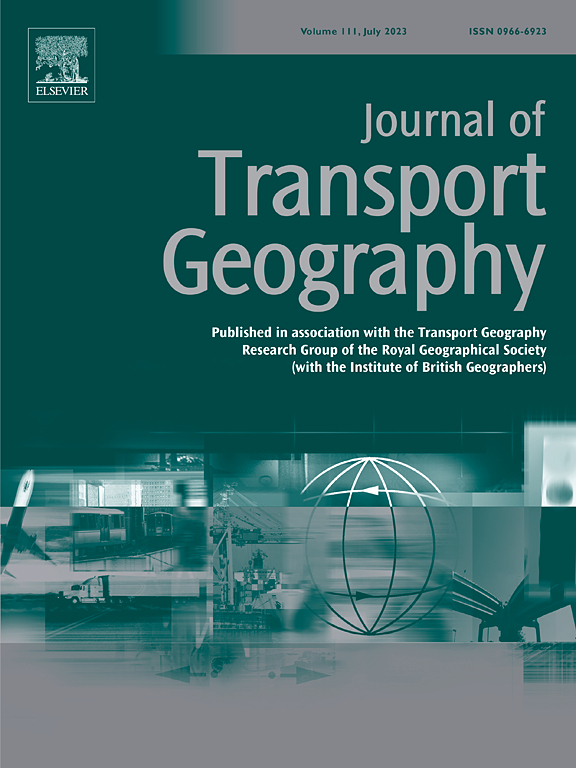A spatiotemporal knowledge graph-based method for identifying individual activity locations from mobile phone data
IF 5.7
2区 工程技术
Q1 ECONOMICS
引用次数: 0
Abstract
In recent years, mobile phone data has been widely used for human mobility analytics. Identifying individual activity locations is the fundamental step for mobile phone data processing. Current methods typically aggregate spatially adjacent location records over multiple days to identify activity locations. However, only considering spatial relationships while overlooking temporal ones may lead to inaccurate activity location identification, and also affect activity pattern analysis. In this study, we propose a spatiotemporal knowledge graph-based (STKG) method for identifying activity locations from mobile phone data. An STKG is designed and constructed to describe individual mobility characteristics. The spatial and temporal relationships of individual stays are inferred and transformed into a spatiotemporal graph. The modularity-optimization community detection algorithm is applied to identify stays with dense spatiotemporal relationships, which are considering as activity locations. A case study in Shanghai was conducted to verify the performance of the proposed method. The results reveal a reasonable level of agreement between the spatial distribution of nighttime activity locations identified by the STKG-based method and the residential locations derived from household travel surveys data, with an R-squared value of 0.53. Compared with two baseline methods, the STKG-based method can limit an additional 45 % of activity locations with the longest daytime stay within a reasonable spatial range; In addition, the STKG-based method exhibit lower standard deviation in the start and end times of activities across different days, performing approximately 10–20 % better than the two baseline methods. Moreover, the STKG-based method effectively distinguishes between locations that are geographically close but exhibit different temporal patterns. These findings demonstrate the effectiveness of STKG-based method in enhancing both spatial precision and temporal interpretability.
基于时空知识图的从移动电话数据中识别个人活动位置的方法
近年来,移动电话数据已被广泛用于人体移动分析。识别个人活动位置是移动电话数据处理的基本步骤。目前的方法通常在多天内聚合空间相邻位置记录以确定活动位置。然而,只考虑空间关系而忽视时间关系可能导致活动位置识别不准确,也会影响活动模式分析。在这项研究中,我们提出了一种基于时空知识图(STKG)的方法来从手机数据中识别活动位置。STKG的设计和构造是为了描述个体的移动性特征。推断出个体停留的时空关系,并将其转化为时空图。采用模块化优化群落检测算法对具有密集时空关系的停留点进行识别,并将其作为活动地点。以上海为例,验证了该方法的有效性。结果表明,基于stkg的方法识别的夜间活动地点的空间分布与家庭旅行调查数据得出的居住地点之间具有一定的一致性,r平方值为0.53。与两种基线方法相比,基于stkg的方法可以将45%的白天停留时间最长的活动地点限制在合理的空间范围内;此外,基于stkg的方法在不同天的活动开始和结束时间上表现出更低的标准偏差,比两种基线方法的性能要好约10 - 20%。此外,基于stkg的方法可以有效地区分地理上接近但时间模式不同的位置。这些结果证明了基于stkg的方法在提高空间精度和时间可解释性方面的有效性。
本文章由计算机程序翻译,如有差异,请以英文原文为准。
求助全文
约1分钟内获得全文
求助全文
来源期刊

Journal of Transport Geography
Multiple-
CiteScore
11.50
自引率
11.50%
发文量
197
期刊介绍:
A major resurgence has occurred in transport geography in the wake of political and policy changes, huge transport infrastructure projects and responses to urban traffic congestion. The Journal of Transport Geography provides a central focus for developments in this rapidly expanding sub-discipline.
 求助内容:
求助内容: 应助结果提醒方式:
应助结果提醒方式:


